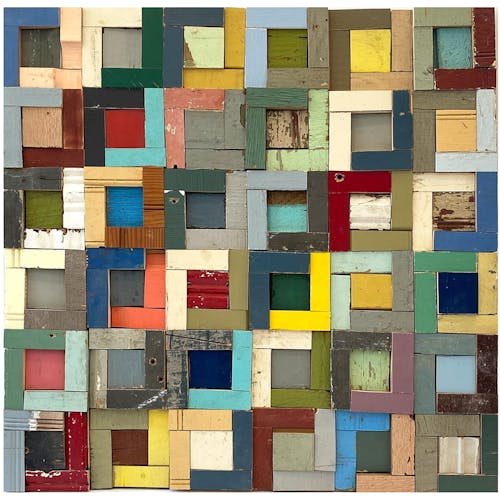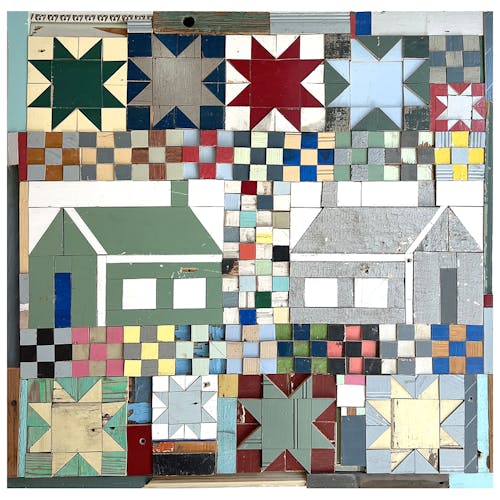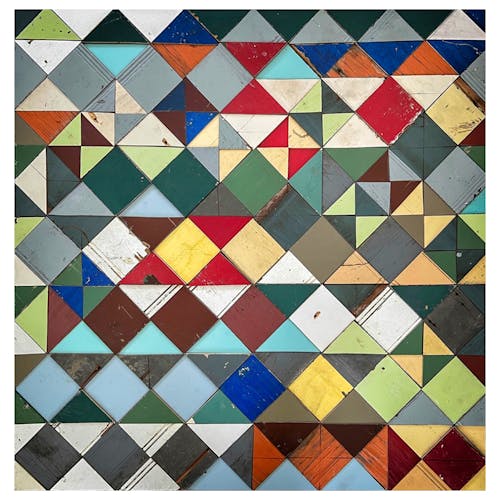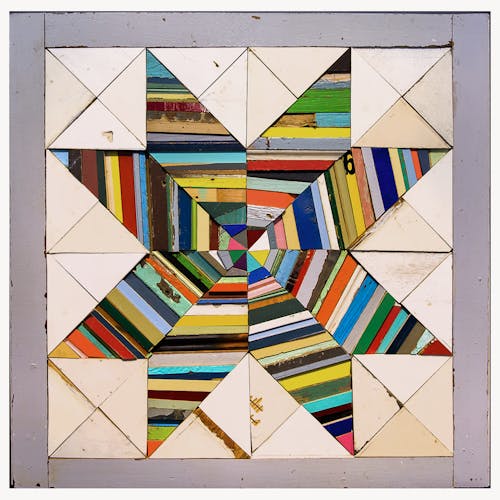Laura Petrovich-Cheney Studio





About The Artist
Laura Petrovich-Cheney • Marblehead, MA
Wood • WHOLESALE AVAILABLE • CUSTOM COMMISSIONS
I collect what has been ignored, discarded, tossed aside, stepped on or washed up. This became imperative after my childhood home was destroyed in Hurricane Sandy. In the months following the storm, I lost both my parents. More importantly, this experience deepened my concerns for our changing climate. Material has memory. Worn planks, split doors, cracked kitchen cabinets, broken painted dressers are my favorite materials. Their visible history and imperfections are in the chipped colors, weathered shapes, and speckled nail holes. Sawing, chopping, and sanding each piece found wood into smaller geometric pieces, I see the promise of reinvention, a new beginning, and a reconciliation that nothing is perfect, nothing remains the same. Inspiration comes from the many anonymous makers of quilts who even in the most challenging times felt compelled to create a sense of home and place. My work represents endurance, the beauty of hope, and the power of second chances.
Connect
|
Q&A with the ArtistTell us how your work is made.I begin by salvaging wood that has been ignored, tossed aside and forgotten. The wood may have been from home renovations, environmental destruction and whatever is tossed onto the curbs. Painted objects like a little girl's dresser, a kitchen cabinet that held cherished China, or cedar siding are collected and stored. I never paint the wood � the color in the final artwork is as it was found. Like most quilters, I take larger pieces of material and cut them down into smaller geometric pieces. Instead of scissors, I use saws � miter, band, sawz-all, and tables saws � to cut my wood. Instead of pressing fabric smooth and clean, I sand my pieces of wood to prepare them for piecing. Pamela Weeks, curator of the New England Quilt Museum, said that my works are true quilts. They have a backing which is a wood panel. My works have a middle layer which is glue instead of batting. Lastly, they have a patchwork top. |
